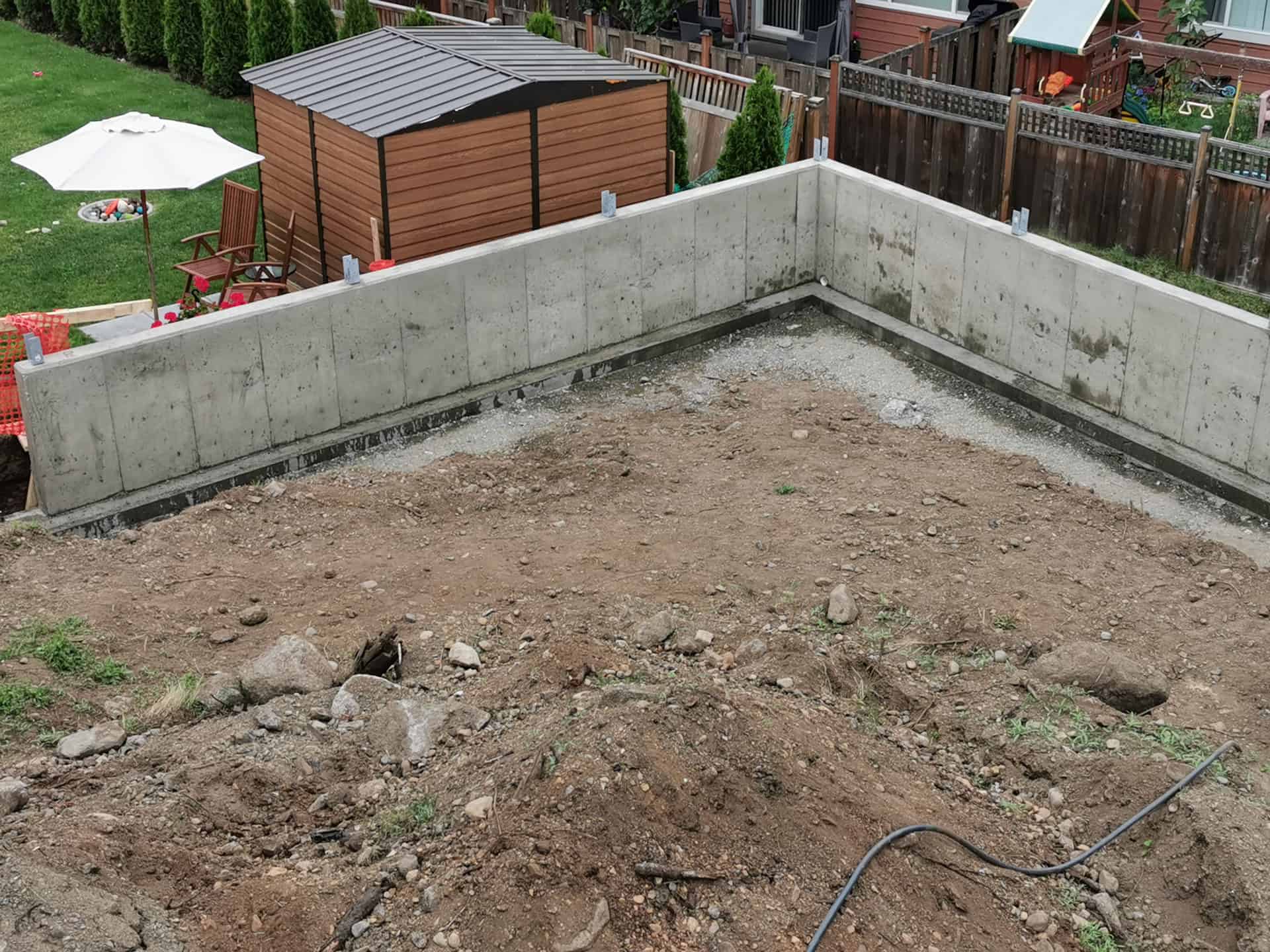Because of the difficulty of terrains a Nanaimo retaining wall can offer a lot of benefits. For instance, it can offer attractive elements, solid property boundary marker, and prevent flood control. As you can see the benefits that this wall offers are hard to ignore.
Things that you need to take into consideration when choosing the right Nanaimo retaining wall for your work. For instance, you want to install a retaining wall to stop water from flowing to your property. Or you possibly want to build retaining walls for decorative purposes around your backyard or pool. Nevertheless, whatever your purpose is you will definitely find this article helpful.
In today’s post, we will talk about the things that you need to take into consideration when choosing. So, without further ado, let’s begin.
Factors to Consider When Choosing the Right Nanaimo Retaining Wall for Your Project
-
Moisture
For your information. A retaining wall needs proper materials and drainage to prevent failures related to moisture or rot.
Wooden retaining wood needs treated lumber in order to increase longevity and lessen the water damage. On the other hand, concrete, stone, or brick holds up more water, but they still need correct drainage to protect the coherence of the structure.
Moreover, it may demand different kinds of gravel-lined beds, soil fill, and engineered Nanaimo drainage systems.
-
Type
There are many different types of retaining walls available in Nanaimo today. Keep on reading to learn more about the types to help you in selecting the right wall.
-
Cantilever Retaining Wall
This type of retaining wall utilizes fewer materials. Compared to other types and this is also the reason why it’s one of the commonly used.
A cantilever is made of a thin stem of steel-reinforced, mortared masonry, or cast-in-place concrete. Cantilever walls, on the other hand, work like beams, cantilevering the load to a fixed and large structural base.
-
Gravity Retaining Walls
A gravity retaining wall is one of the most frequently used and oldest retaining walls. Often, it built using stone and other heavy materials. It also relies on the weight of its own lump in order to endure the pressure from retained materials.
Moreover, this type of retaining wall must be a minimum of 50% to 60% as thick as the wall’s height. However, it needs to be bigger if there is an increase in the slope on the wall.
Gravity walls most especially the modern ones include precast concrete blocks, concrete crib walls, boulders, and gabions.
If you’re not familiar with a gabion, it is a kind of soil strengthening that has a wire mesh cage into which harshly cut stones or other materials are filled.
-
Reinforced Soil
This system doesn’t only contain the wall itself, but it also uses straps or reinforcing grids to stabilize and contain the slope. In fact, the traction-resistant reinforcement element changes the soil mass’s nature and lessen the pressure of the earth acting on the walls.
The reinforcing layer is attached to the outer part of the walls. Usually, the wall face is made of a precast Nanaimo concrete unit that is capable of tolerating differential movements.
-
Anchored Retaining Wall
An anchored retaining wall is pinned both the bottom and top with cables that are cast in the soil or rock behind it.
This type of wall is driven to the material and expanded at the cable’s end either by injecting pressurized concrete into the holes or by mechanical. Anchored walls, on the other hand, may be implanted at the base and tied to slabs at the top.
-
Height
If you’re planning to put up retaining walls to make a flower bed you will have greatly different needs from someone who is doing excavations or attempting to level out his yard. For this kind of wall, the most popular options are castle wall-kind blocks that are interlocking. As a matter of fact, they are made of concrete. What’s more, they offer adequate stability and weight for such a case.
For smaller walls, bricks, wood, and stones can be used. Fortunately, they are all easy to install. But you need to do your homework and ask for advice from someone who has experience with retaining walls.
However, for bigger retaining walls, you are more likely to need some engineering assistance. Concrete repair Nanaimo, formed concrete, simulated stone, or big boulders may be utilized depending on the structural needs and situation.
-
Aesthetic
Another factor that you need to take into consideration when choosing the right retaining wall in Nanaimo is the aesthetic.
Consider how you would want your wall to look. Do you want your wall to look simple and plain or want to have a functional wall or a beautiful architectural feature?
Remember that different types offer various aesthetic effects. Some homeowners opt to utilize a concrete as their structural material and have their retaining walls face with either simulated stone or real veneer. While others paint the walls in stucco.
Conclusion
When planning your retaining walls in Nanaimo you need to think about the function and size and the potential for a visual look. But most importantly, you will need to consider the structure’s purpose and do everything that you can to guarantee safety. Take note, with the right construction, materials, as well as drainage, your retaining walls can will last for many years.
Nevertheless, while the above-mentioned factors serve as a relevant guide when it comes to choosing retaining walls in Nanaimo, you need to bear in mind that not all projects are equal, meaning they are unique in their own ways.
When looking for the right wall that will meet your project it really pays to consult professionals.
At ViPremium Contracting, they have years of amazing experience when it comes to the design, manufacture, and most importantly construction of retaining walls. In fact, aside from retaining walls, they also specialize in other concrete services like stairs, patios, sidewalks, brick walls, and curbs.
Visit VIPremiumContracting.com and their team of experts will discuss as well as advise on the best solution for your needs or problem.


